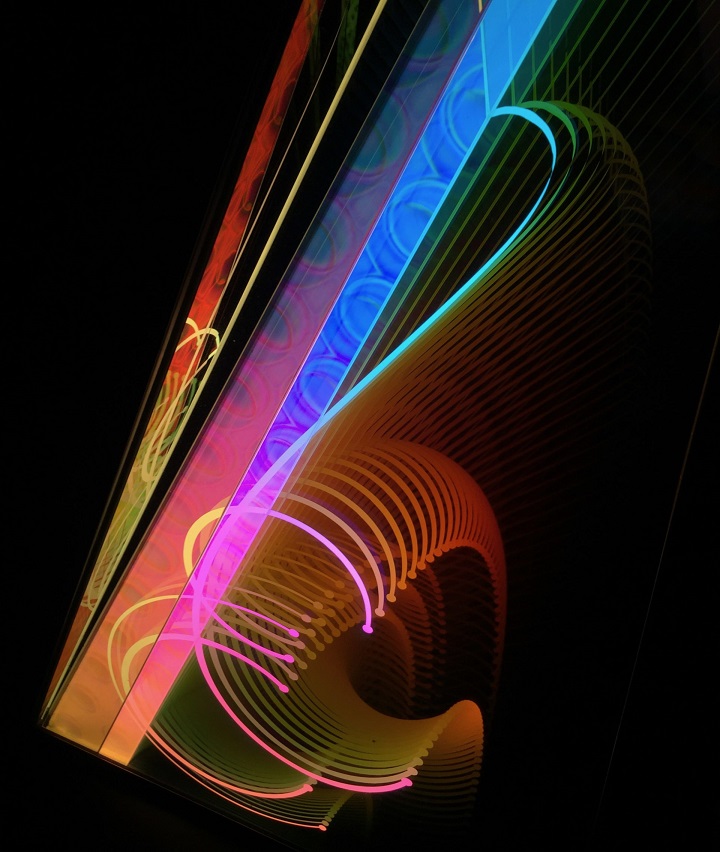LIGHT AND SPACE THAT MYSTERIOUSLY REFLECTS AND EXPANDS
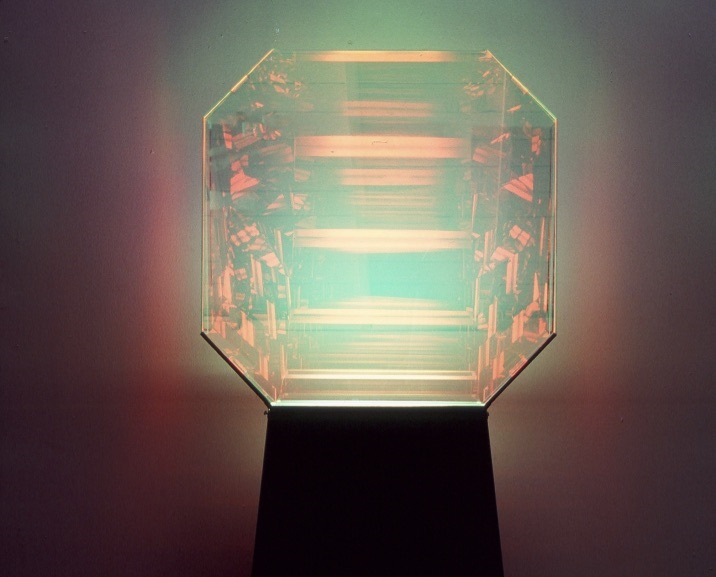
Thin Octagon, 1983
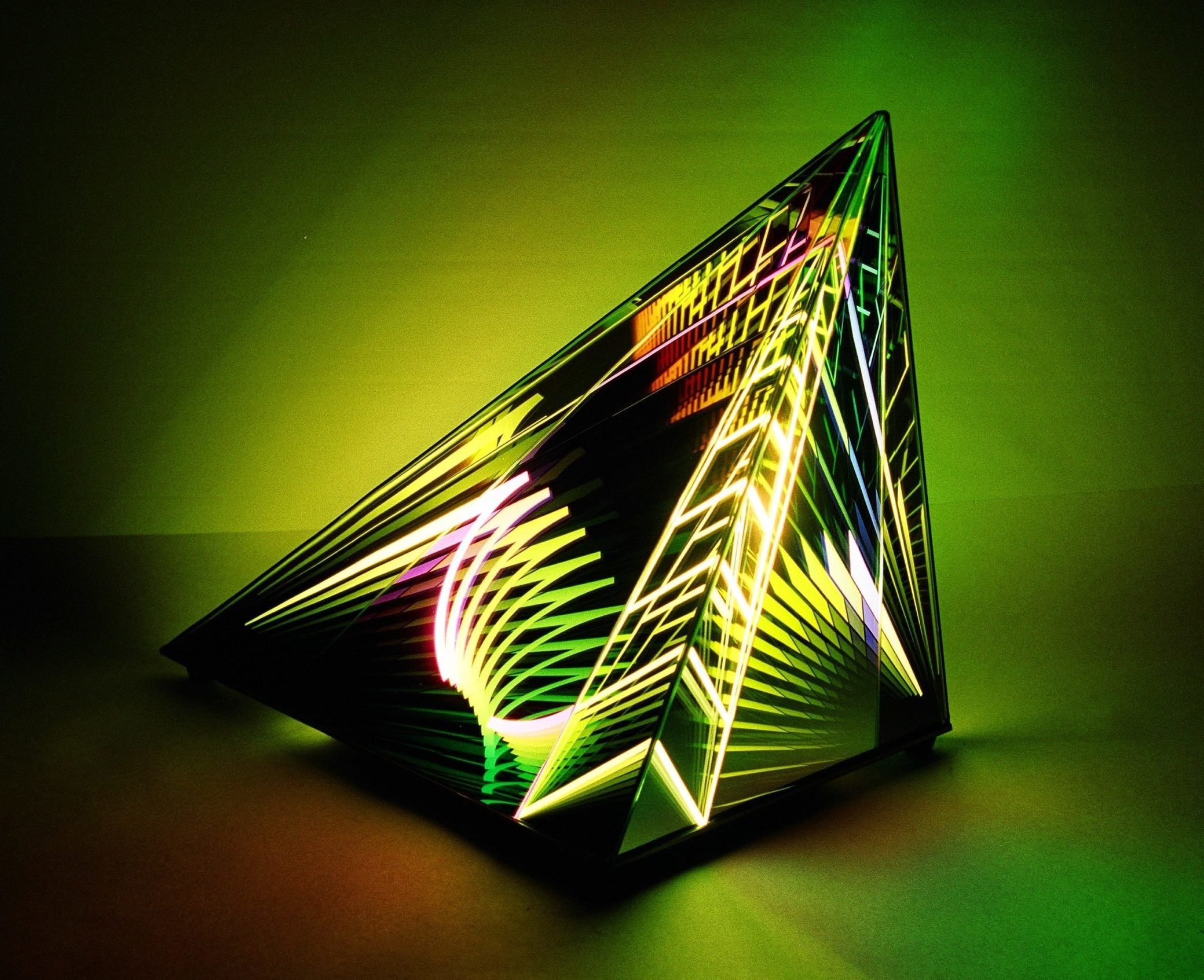
Slope Pyramid, 1988
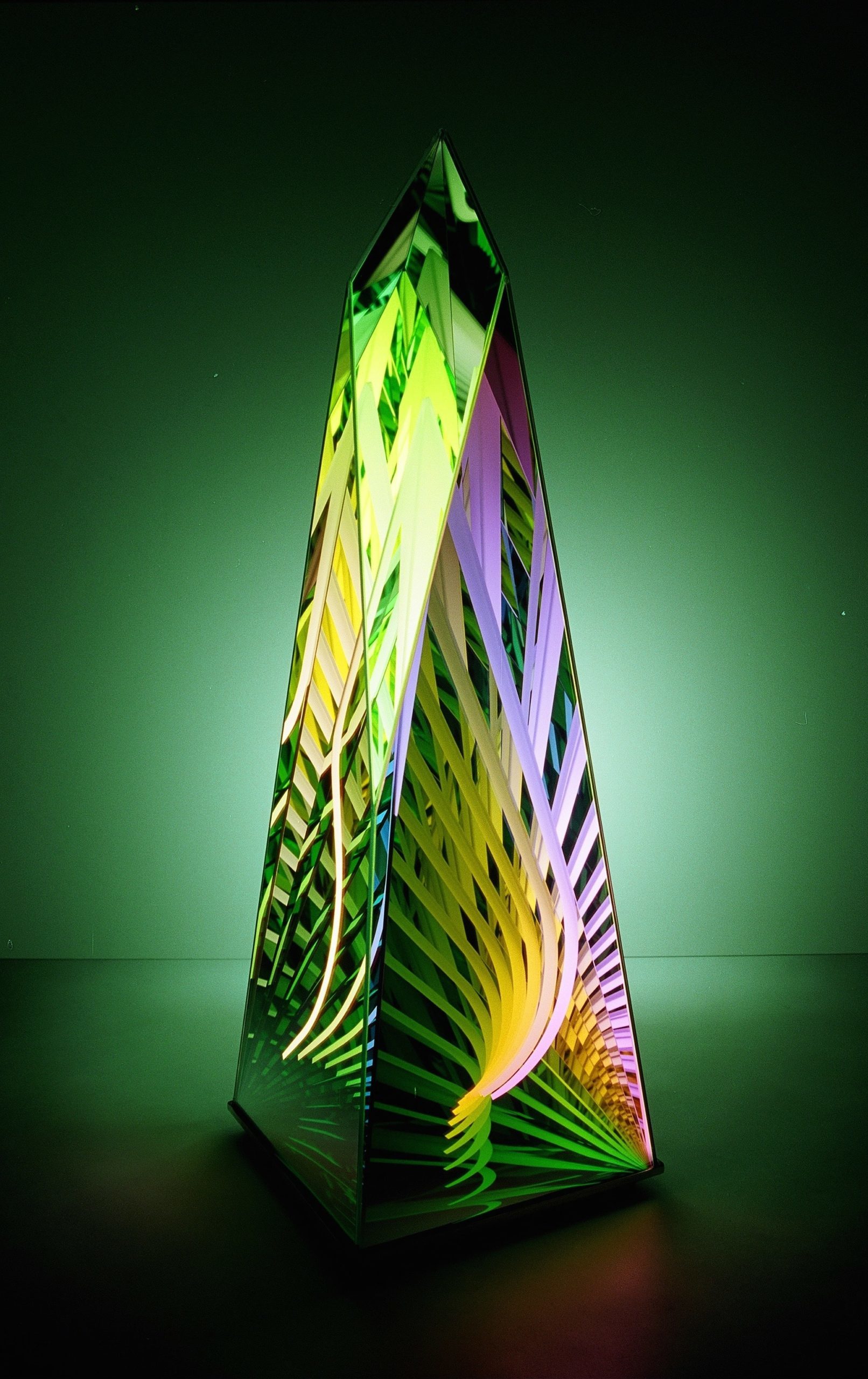
Dancing, 1992
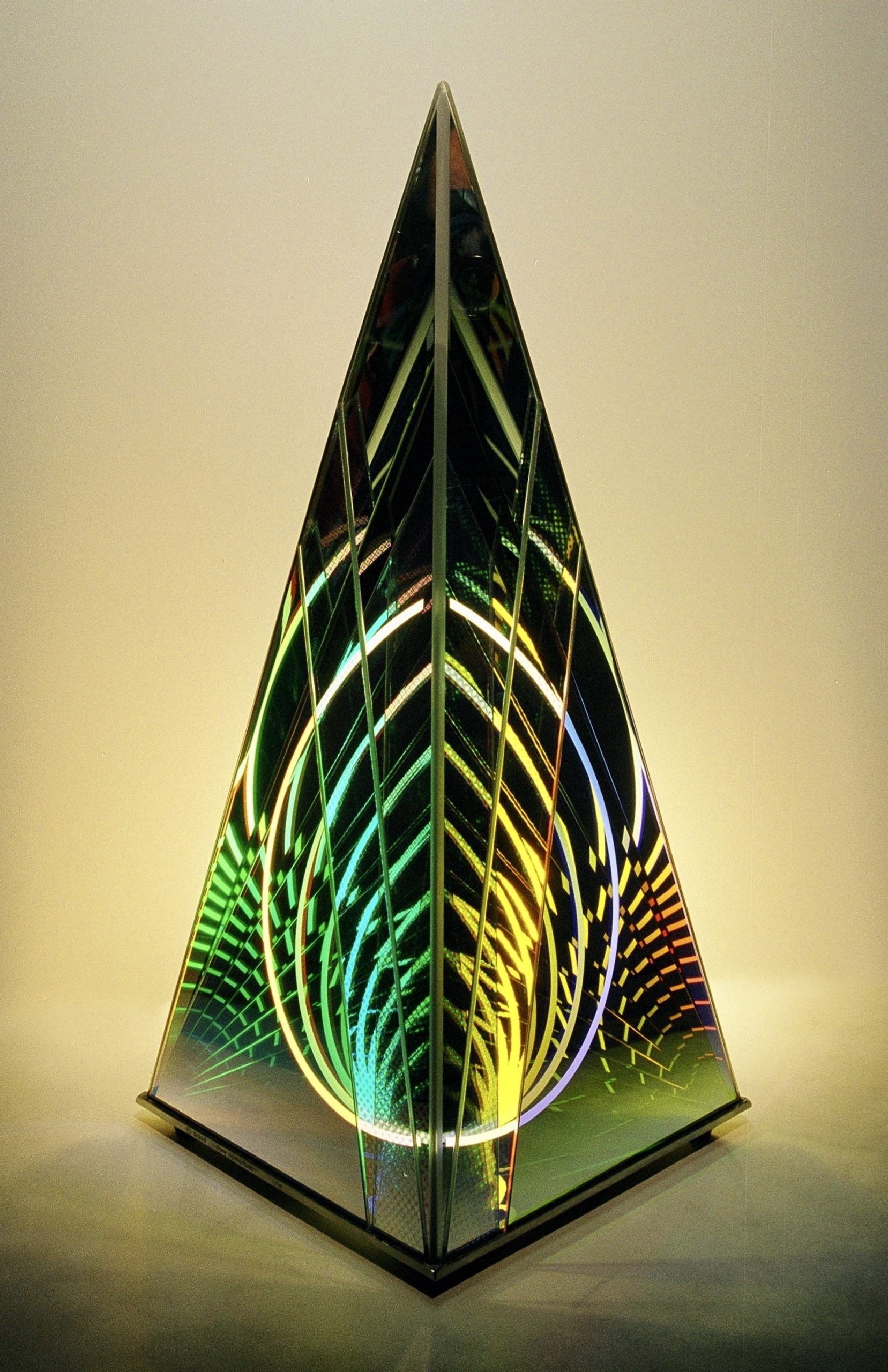
Shifting Portal, 1995
Summary of Ray Howlett Light Sculpture
1958: upon entering the university of nebraska, I changed my major from engineering to art
15 years later I was using both engineering and art together.
1964: started my interest in making mysterious and well-developed art
The following years after art college, I started experimenting to become original and for the fun of discovery. By 1973, now living in Los Angeles, I had invented a new artform of electric light, together with other forms of engineering.
Most of the major artworld in my career went “Minimal” and “Conceptual.” I chose MAXIMAL and AESTHETICS.
All my art materials were invented (or developed for access) within my lifetime
Not much art is pure contemporary in new materials, and also a purely unique artform; my sculpture is both.
1964, I started with mixed media materials: high-contrast photography, float-glass sheets, and acrylic paint. In 1973 my art materials included the newest kind of engineering: vacuum deposition of metallic coatings onto the newly perfected “float” window glass sheets; new engineering of “fluorescent” light; space-age “silicone” glue; and “stainless” steel sheet metal. In 1987 my list expanded to include aerospace optical-engineering “dichroic color,” and aerospace chemicalengineering of “optical cleaners and adhesives.”
In general, I have been an isolationist, trying to be original as a purest, not wanting influences, staying away from the artworld. My early artwork was made without knowledge of the California “Light and Space” art movement until the late 1970s, when I discovered these other artists with similar interests. I have not yet met any of them.
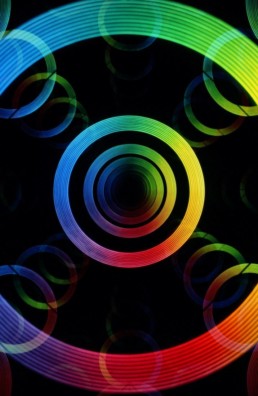
1975: My first museum group exhibition, “the rainbow show”
My artwork ‘Rainbow Vortex,’ exhibited at the de Young Museum, San Francisco, CA.
This artwork is crude in comparison to my work a few years later.
San Francisco Examiner, 3/27/1975, “THE RAINBOW SHOW” review by Alfred Frankenstein:
“The light sculpture by Ray Howlett is the only artwork in this exhibition worthy to be displayed in a major art museum.”
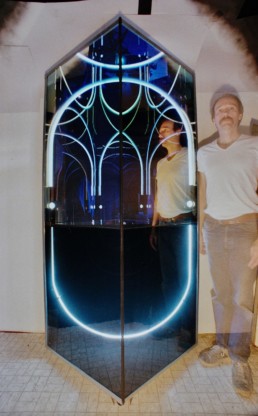
1983 Self-portrait magic, inside my Santa Monica studio
I look transparent, with me stepping into a time-exposure photo of my newest light sculpture.
I was an early pioneer in all the following historical art movements and Aspects, all combined at the same time in my artform of 1973.
- Push And Pull Of Space
- Contemporary Art
- Light Sculpture
- Constructionism Or Structuralism
- Light And Space
- OP Art
- Viewer Interactive
- Conceptual Art
- Infinity Art
1978, started my devotion to a new kind of color
I introduced “DICHROISM” color on glass to the art world, as a sculptural and architectural window material. This color is not a pigment or a dye, but a molecular-thin metallic-coating on glass that refracts white light. These coatings were originally used in science where the focus was on isolating a particular wavelength of light.
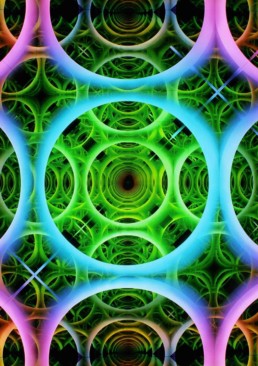
2004 Salute to “Op Art”
Detail photograph inside my dichroic mirror box. You are seeing a photograph that displays the highest quality dichroic coating on glass, of which the largest size is only 24-inch sheets.
This is my favorite example of the “dichroic” color shifting effect.
My sculpture is not complete without viewer participation.
Unless you have interacted with one of my sculptures you would not know my artform; you would not know my intentions of giving an interactive experience.
Video somewhat shows the mysterious qualities of dichroic color shifting, and image alignments changing, all because of viewer’s movement while exploring the visual effects offered by the art.
This sculpture is different from all other art, which every viewer will discover as they start exploration of the art. Best viewed indoors in a low light room, and up close interaction.
If you have seen video, you would get a hint of the focus of my art: viewer’s experience.
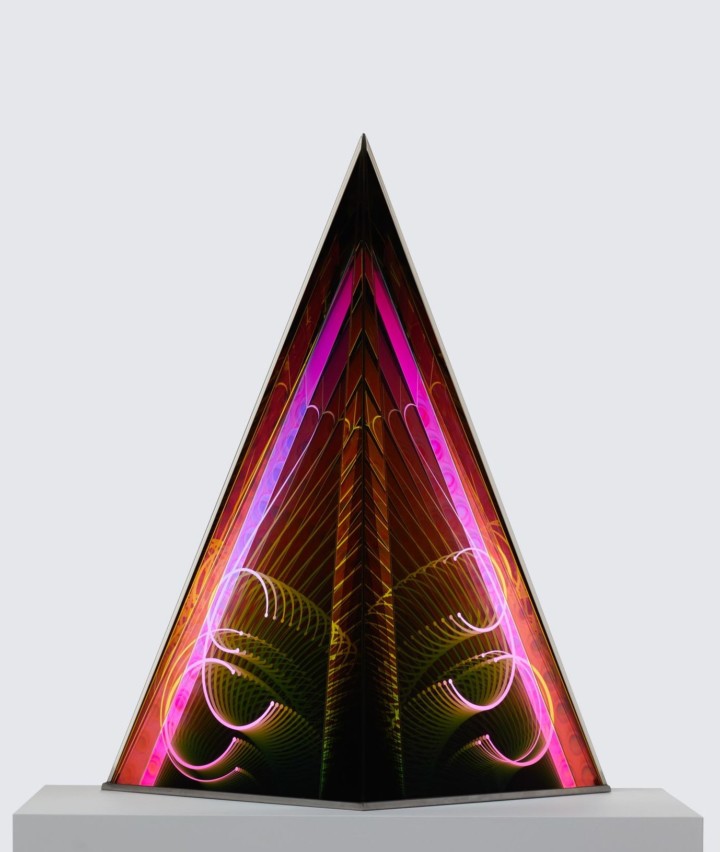
COMPOSITIONS CHANGE BY VIEWER’S INTERACTION
